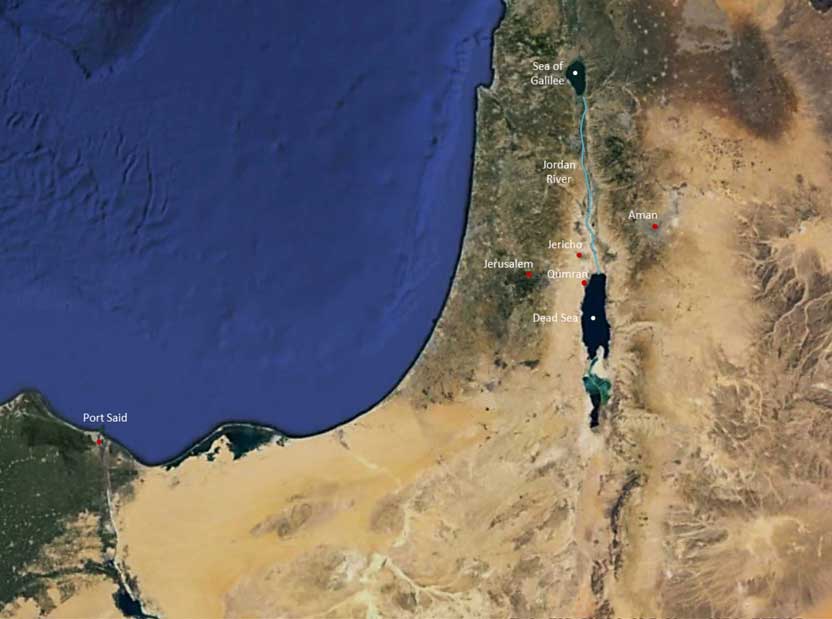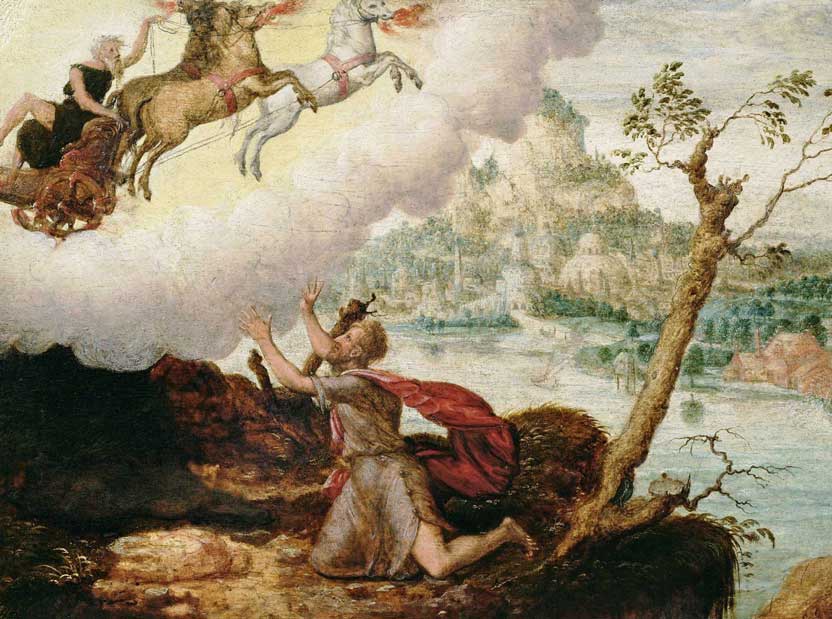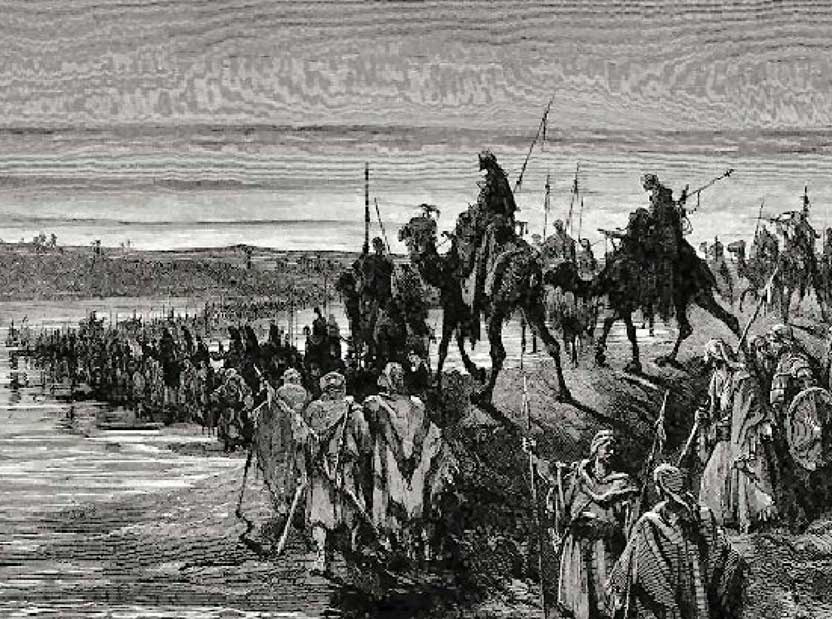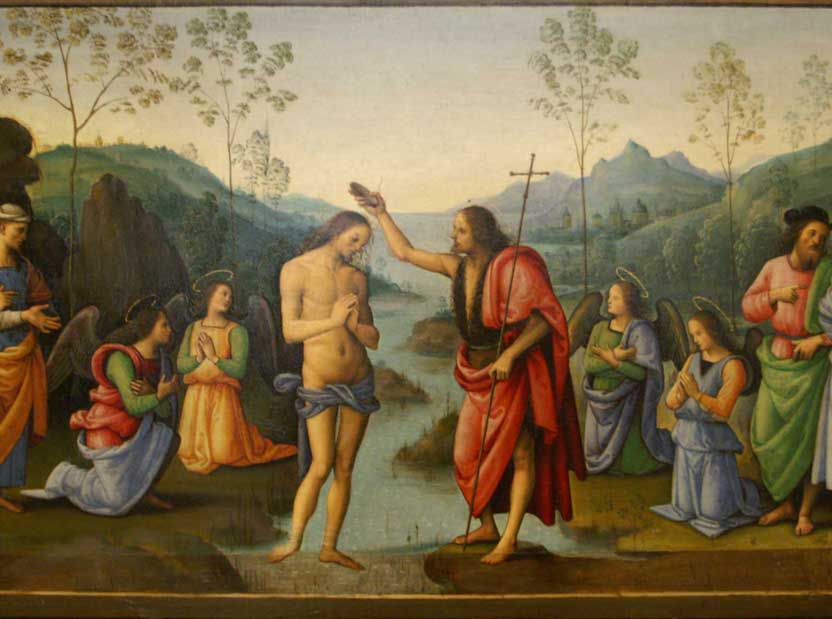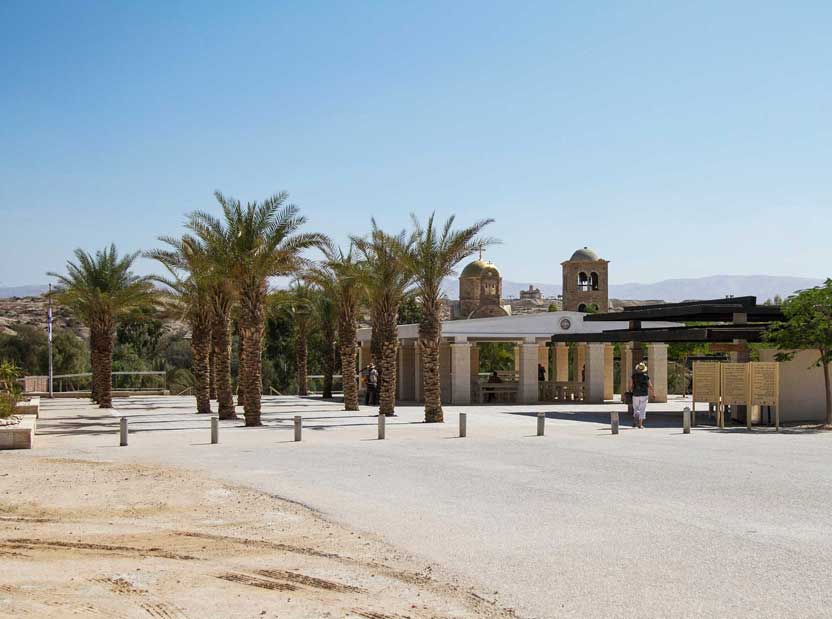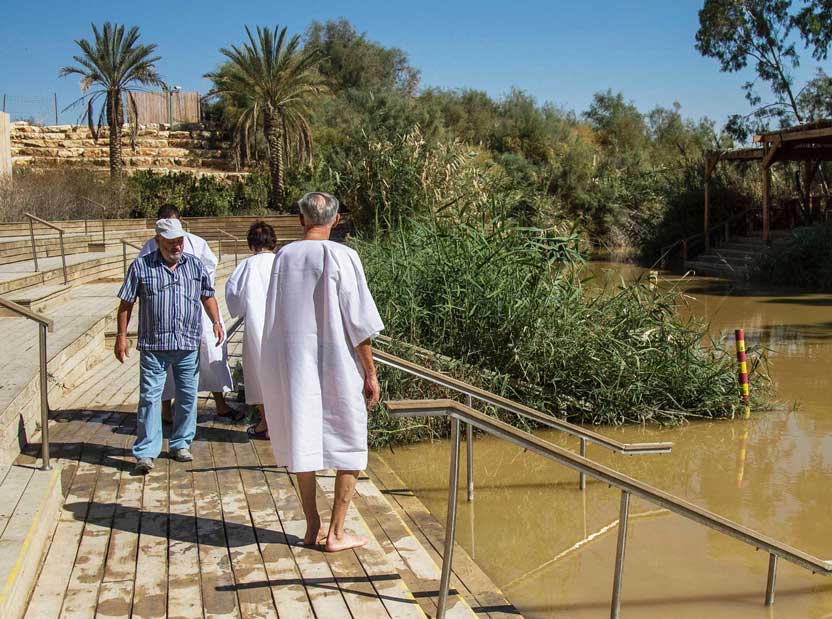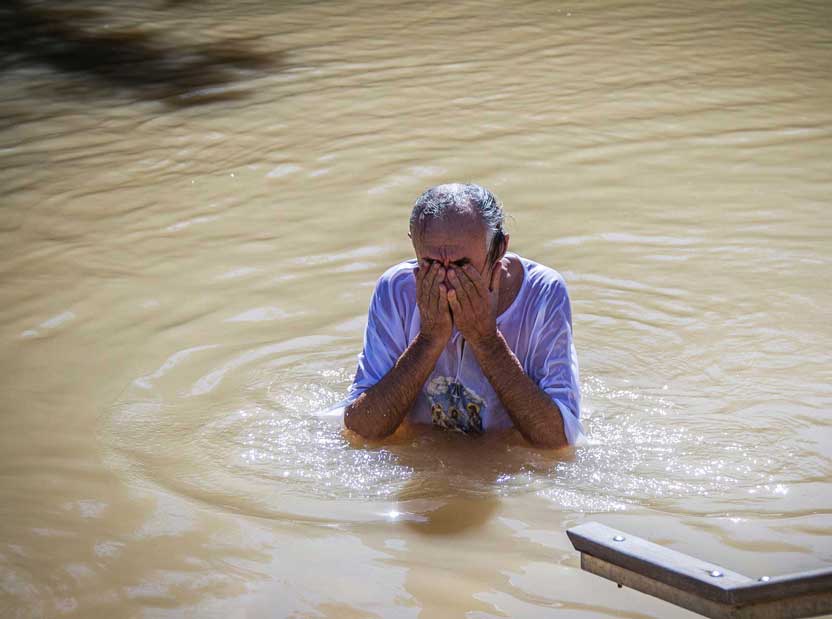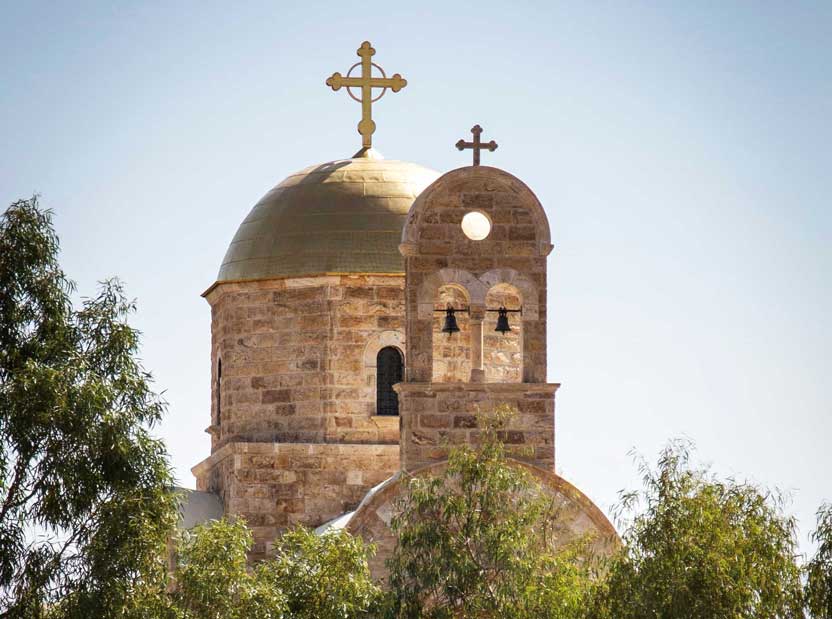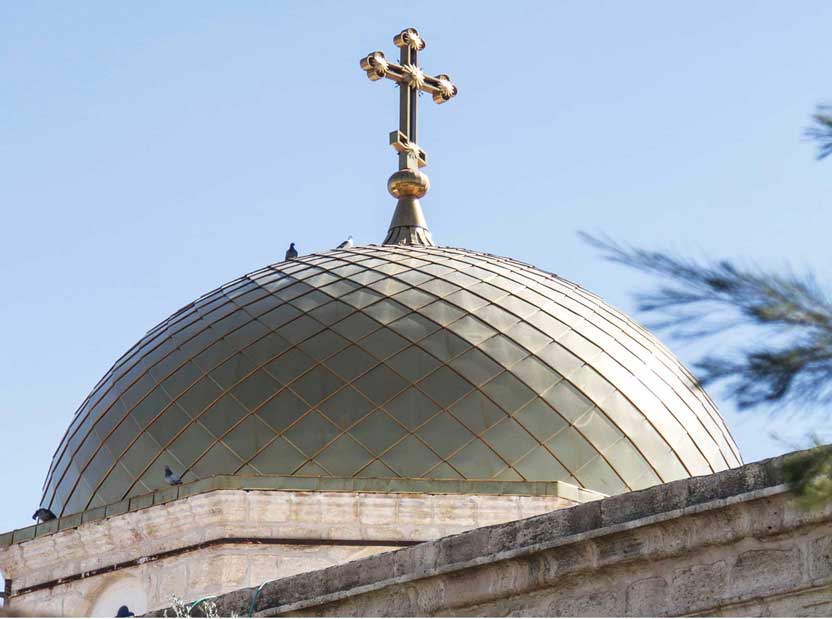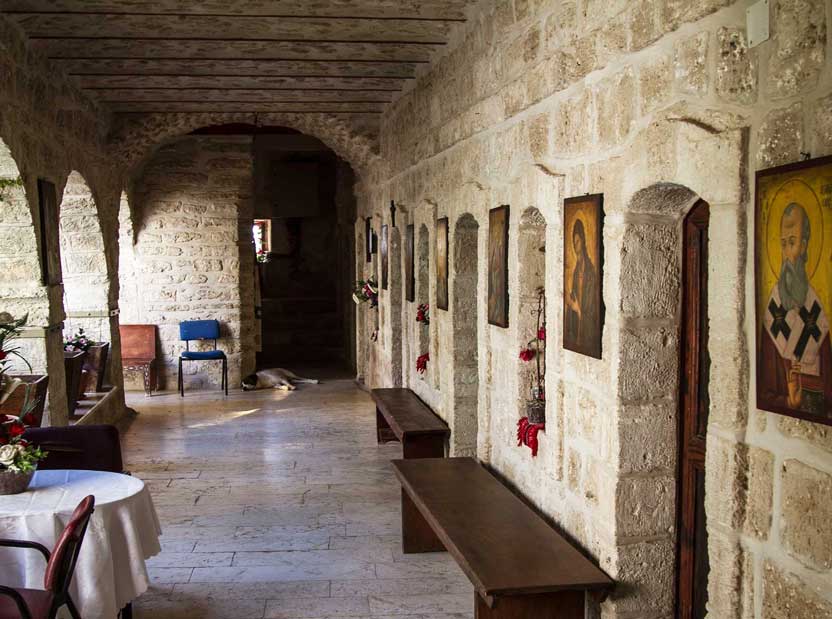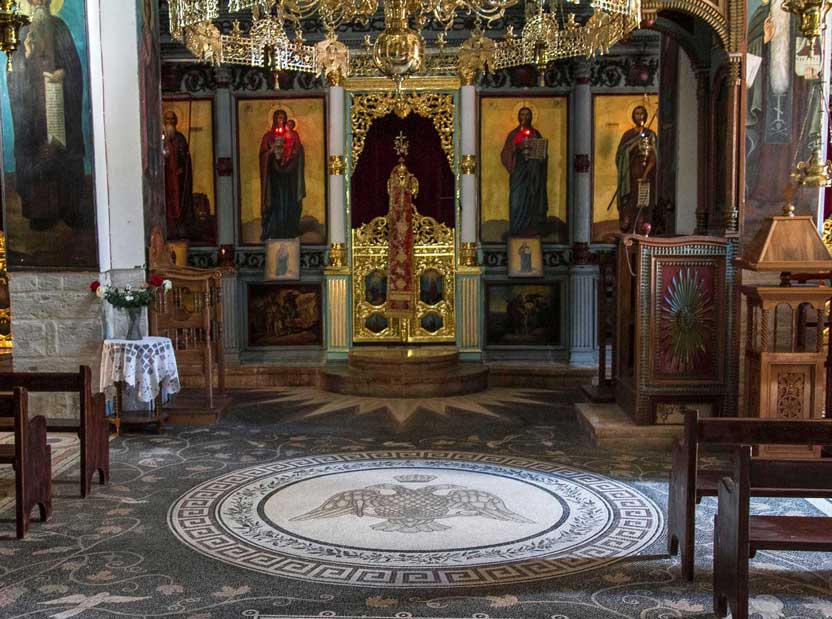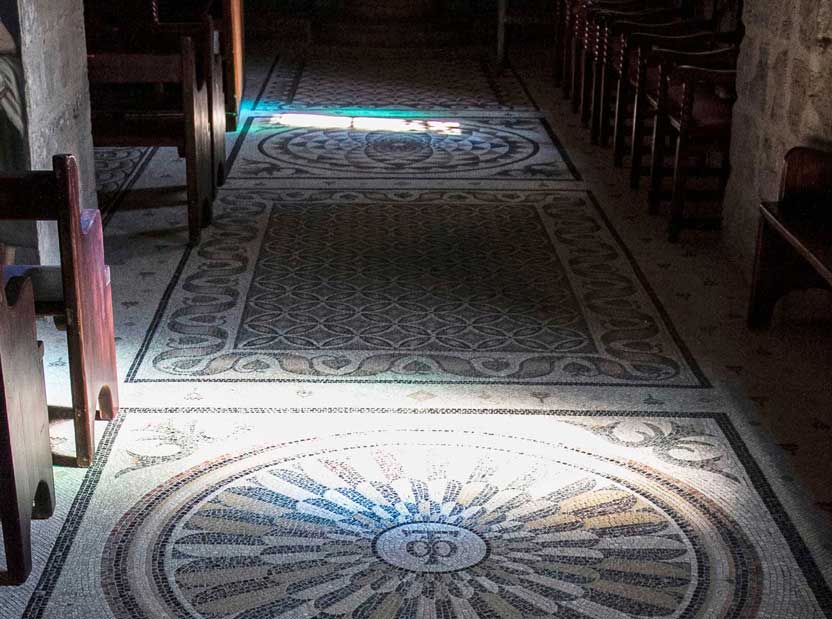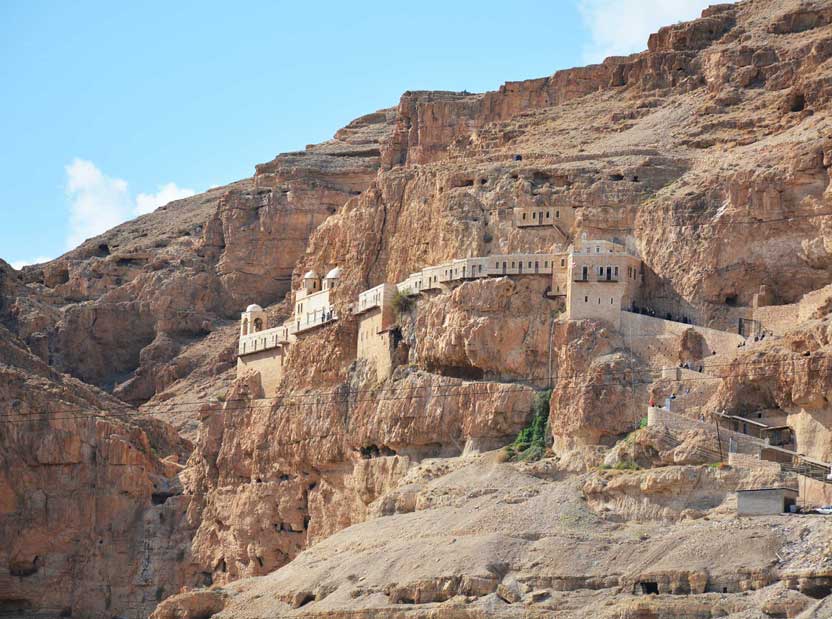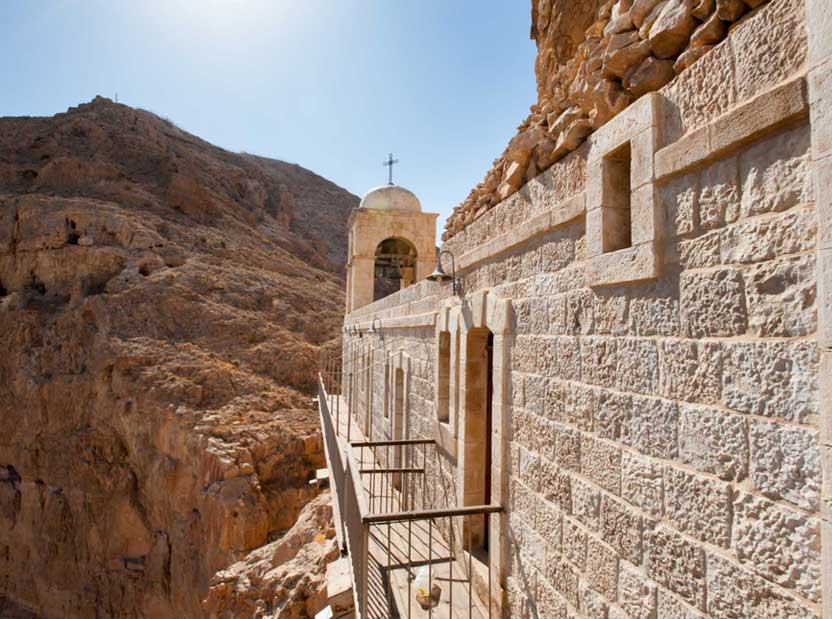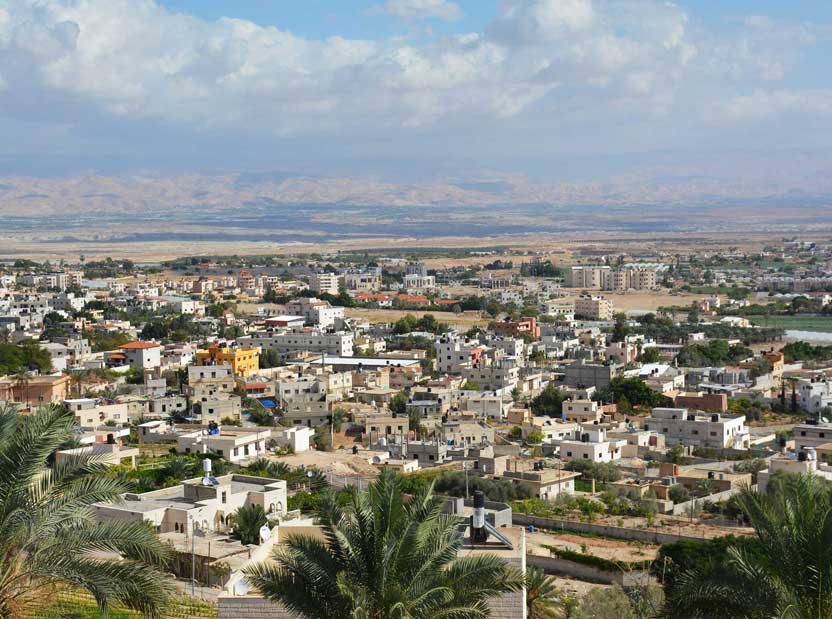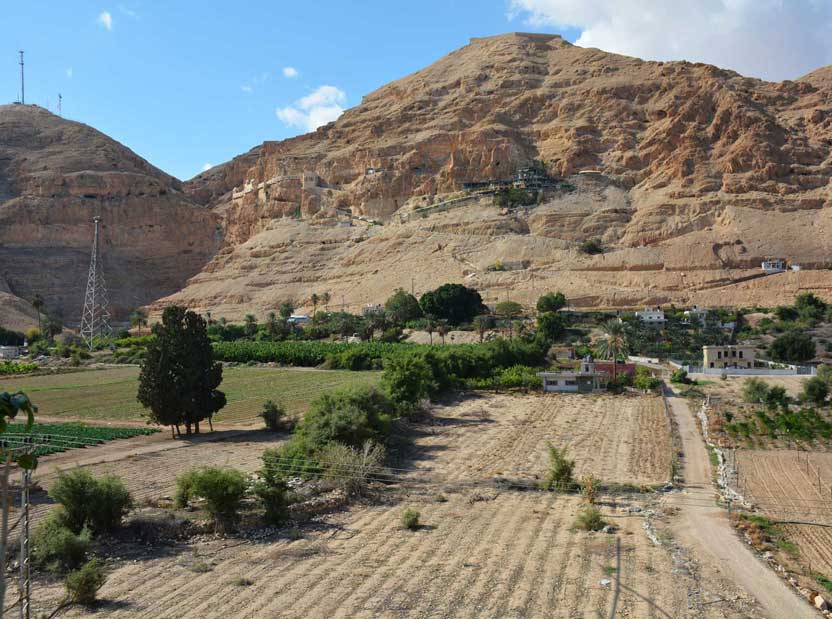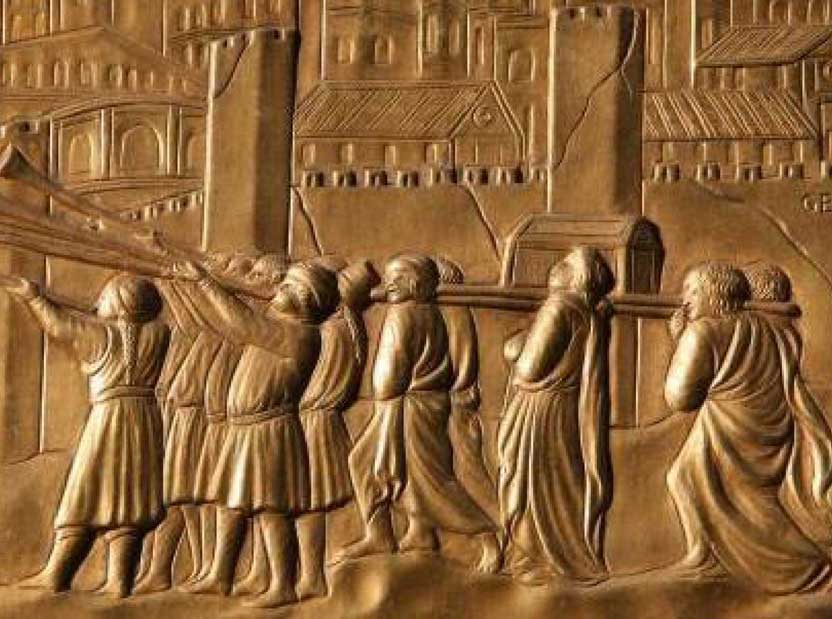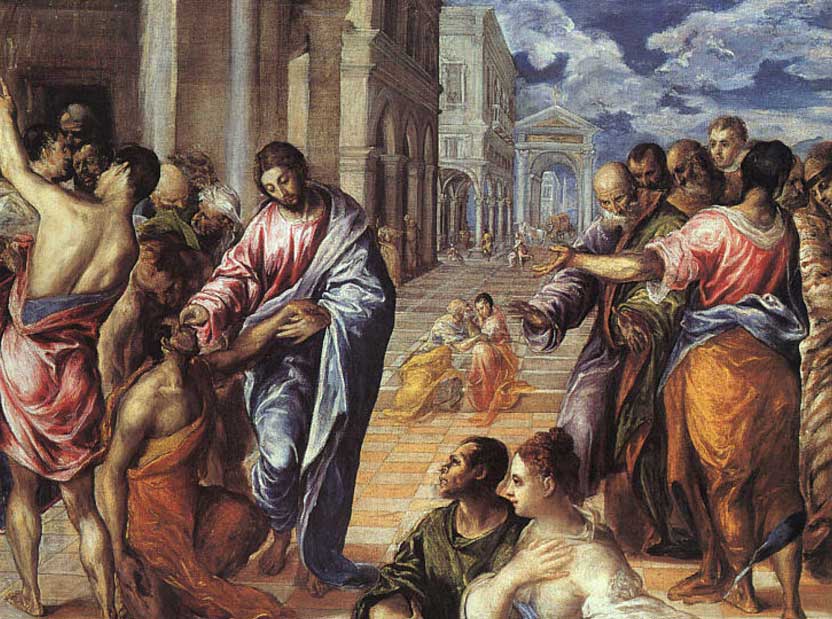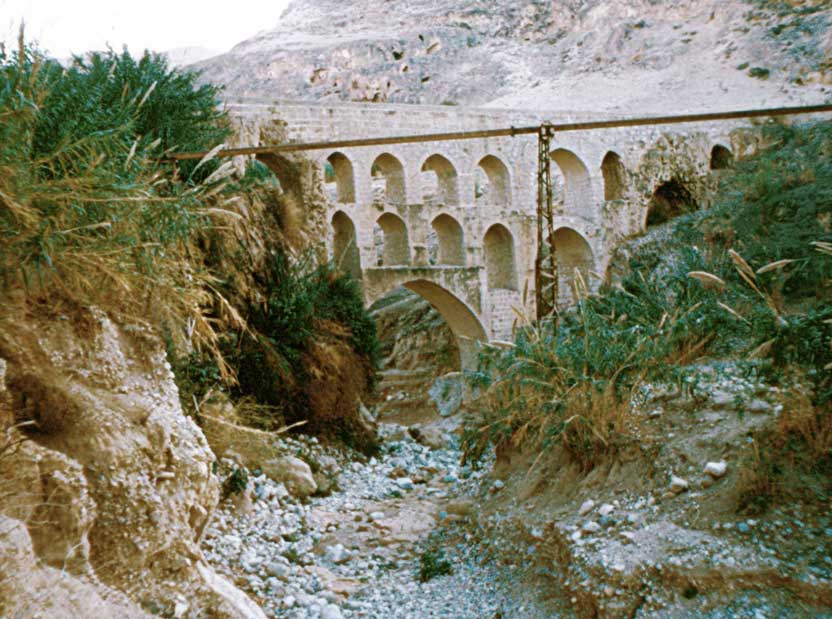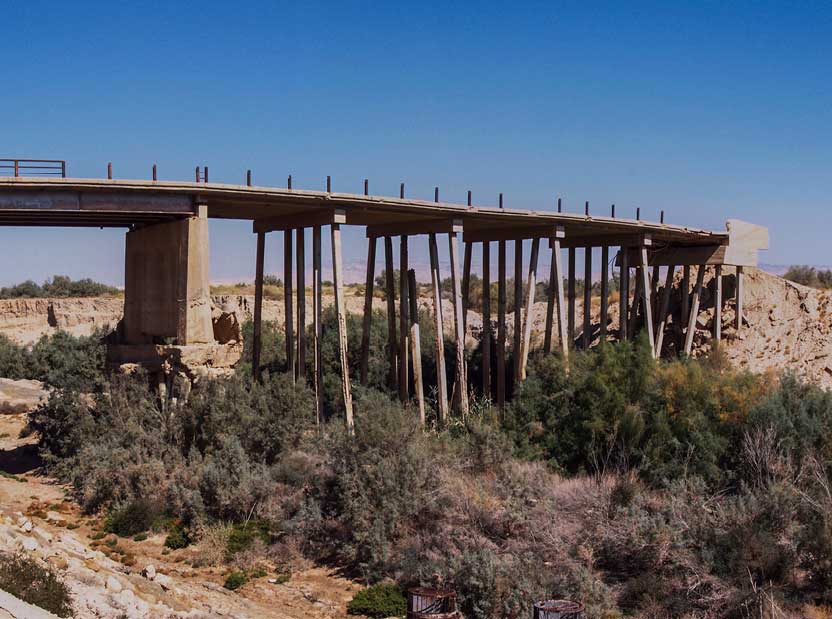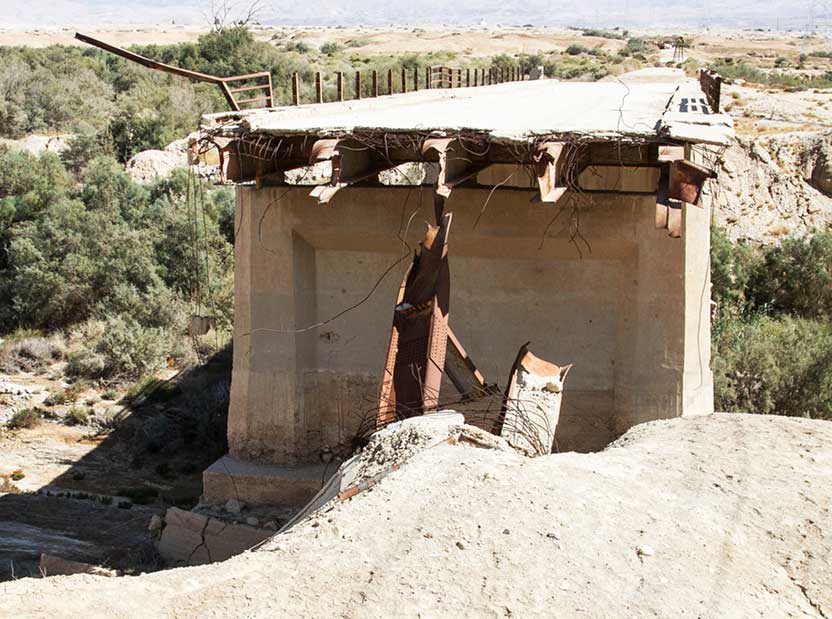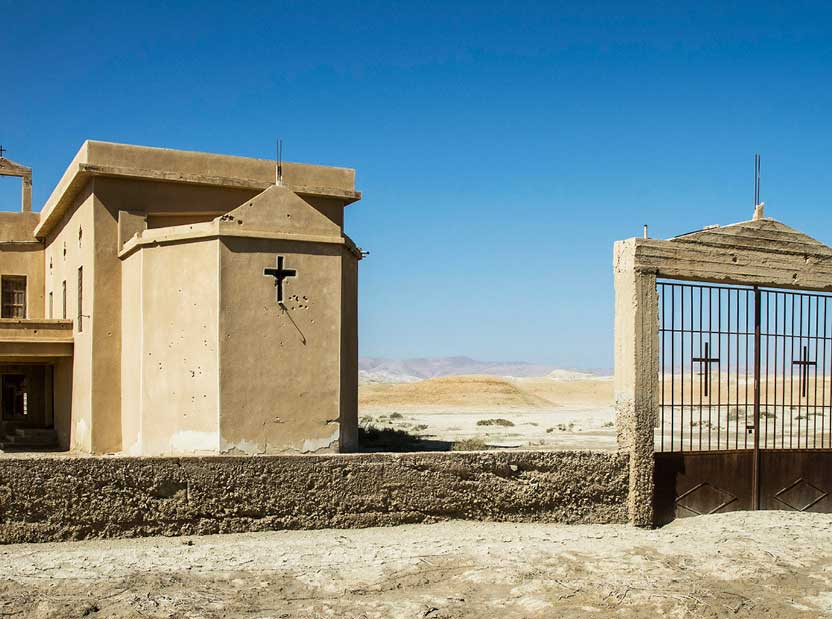Bound by the hills of Samaria to the west and the larger mountains of the Hashemite Kingdom of Jordan to the east, the valley is part of the larger Jordan Rift Valley, which was formed millions of years ago when the Arabian plate moved away from Africa. The Jordan River is sacred to Jews and Christians as the site where the Israelites crossed into the Promised Land and where Jesus of Nazareth was baptized by Saint John the Baptist.

Jordan River Valley
Cradling holy waters of the Jordan River
THE JORDAN RIVER
Perhaps more than any other river, the Jordan River has captured the hearts and minds of millions of people around the world. Its importance to the stories of both the Jewish people and Christians everywhere cannot be overstated – the Israelites crossed the Jordan to reach the Promised land, and Jesus of Nazareth was baptized in its waters by St. John the Baptist.
Today the Jordan River continues to flow as it has for thousands of years, bringing water from the northern mountains to the Sea of Galilee. The river then flows southward from the Sea of Galilee to the Dead Sea, where pilgrims and tourists come in great numbers to bathe in the river’s waters and enjoy the peaceful scenery that it provides.
Read More
1. Geography
The Jordan is a 251 kilometer (156 mi) long river that begins below the Hermon mountains and runs via the Hula Valley to the Sea of Galilee. From the Sea of Galilee the river meanders through the Jordan Valley as it makes its way to the Dead Sea, about 420 meters below sea level, where it joins the salty sea waters. There are two major tributaries in the lower Jordan: the Yarmouk and Zarka rivers.
South of the Sea of Galilee, the Jordan River forms the natural border between the Hashemite Kingdom of Jordan (to the east) and Israel/Palestine (to the west).
2. Biblical Significance
From Jacob to Jesus, from Joshua to John the Baptist, the Jordan River played a role in many of the Bible’s most significant events.
Old Testament
A defining natural element of the region, the Jordan River is given passing reference throughout the Old Testament. One of the most significant of these is the description of Jacob crossing the river (and its tributary the Jabbok, now called the Zarqa) on his way back from Haran, after the twenty years he spent there in the company of his father in law, Laban. The river was crossed by the prophet Elijah and his disciple Elisha, through whom God performed miracles, like the healing Naaman in the river’s waters.
But the most monumental event to take place at the Jordan River in the Old Testament was the crossing of the Israelites under the leadership of Joshua. The Israelites had been living in the desert for forty years after fleeing from Egypt where they were enslaved by the Pharaohs. When they finally entered the Promised Land under the leadership of Joshua, they did so by crossing the Jordan River.
New Testament
The Gospels tell us that Saint John the Baptist practiced his baptism in the Jordan River (Matthew 3:5-6; Mark 1:5; Luke 3:3; John 1:28). It was in the Jordan’s waters that Jesus of Nazareth was baptized by St. John. It was also here that John testified that Jesus was the Son of God (John 1:29-36).
As Jesus continued his ministry, he crossed the river several more times, and his believers crossed the river to hear him preach and be healed (Matthew 4:25; Mark 3:7-8). He even took refuge there when he was in danger of being captured, finding solace in the place he had first been baptized (John 10:39-40).
Beyond
Owing to its rich biblical history, the Jordan River has been a frequent symbol in poetry, music, and literature. It symbolizes the freedom attained by the Israelites in the Promised Land after their bondage in Egypt, and its waters exemplify the spiritual healing of Jesus. To this day, much of Christian royalty use water from the Jordan River to christen their heirs and princes
QASER EL YAHUD BAPTISMAL SITE
Qaser el Yahud is a baptismal site on the western bank of the Jordan River, just north of the Dead Sea. Traditionally recognized as the place where Jesus of Nazareth was baptized by St. John the Baptist, it is also said to be where the Israelites crossed into the Promised Land, and where the prophet Elijah ascended to heaven on a chariot of fire.
Read More
Because Christian tradition marks Qaser el Yahud as the place of Jesus’ spiritual birth, the site is one of the most sacred in the world, just behind the Church of Nativity (in Bethlehem, where Jesus was physically born), and the Church of the Holy Sepulchre (at Golgotha, where he was crucified).
Pilgrims can enter the river via marble steps that descend into the Jordan River. Surrounding the area are ruins of Byzantine and Crusader churches that were built at the site throughout the centuries.
The site reopened to the public in 2010 after having been closed for 44 years. Although operated under the Israeli authorities, visitors today can reach Qaser el Yahud from Israel, Palestine or Jordan.
For visiting hours and other practical information, visit the Israel Nature and Parks Authority listing here.
MONASTERIES
1. Deir Hajla Monestary / St. Gerasimus Monastery
Deir Hajla is a Greek Orthodox monastery near the city of Jericho in the southern Jordan River Valley. Built above a cave believed to be the place where Mary, Joseph and the infant Jesus hid when they fled from King Herod, the monastery also commemorates Saint Gerasimus and is one of the many important Christian pilgrimage sites in the Qumran region.
Read More
St. Gerasimus of the Jordan was among the early monks who arrived in the Land of Israel sometime in the fifth century. According to Christian tradition, the saint once tamed a lion by removing a thorn from its paw. The lion rewarded St. Gerasimus with its obedience and lived with him through the rest of his days in the Judean Desert.
Gerasimus’ original monastery was built as a lavra – a cluster caves for hermits with a church at the center. This monastery was destroyed during the Sasanian invasion in 614 AD, and rebuilt in its current style in the 12th century during the Crusades.
Over the centuries the monastery was destroyed, abandoned or leveled by earthquakes several times, and each time it was built again. In 1890, the monastery was restored by Greek Orthodox monks, who preserved the Crusader era architecture.
The monastery features a square courtyard that is surrounded on four sides with arches and supporting pillars. A large water cistern sits in the middle of a central garden and plaza.
The central space of the church is separated from the holy area of the altar by the iconostasis, which is decorated with images of other monks from the era of Gerasiumus who lived and worked nearby, including Saint Euthymius, a pioneering monk who founded several monasteries in the region, and Saint Simeon Stylites, who is known to have sat on a column without stepping off of it for 37 years.
A crypt beneath the church houses the skeletal remains of monks who lived in the monastery as far back as the seventh century AD. Gerasimus’ skull can be seen near the entrance to the church.
The monastery is open to visitors throughout the week. Modest dress is required.
2. Monastery of the Temptation
“Again, the devil taketh him up into an exceeding high mountain, and sheweth him all the kingdoms of the world, and the glory of them; And saith unto him, All these things will I give thee, if thou wilt fall down and worship me. Then saith Jesus unto him, Get thee hence, Satan: for it is written, Thou shalt worship the Lord thy God, and him only shalt thou serve.” (Matthew 4:8-10)
The Monastery of Temptation takes its name from the Mount of Temptation, where Jesus spent forty days and forty nights fasting and meditating during the temptation of Satan. It is one of the holy sites that was recognized by Queen Helena (Augusta Helena of Constantinople) during her pilgrimage in 326 AD. In the 6th century AD, Byzantine monks built a monastery using natural caves under the summit of the mountain.
In 1099, the Crusaders built two churches on the site – one in a cave believed to be the cave in which Jesus meditated, and one on the summit. The Crusaders called the mountain
“Mons Quarantana” (Quaranta meaning forty, the number of days Jesus fasted).
The modern monastery was built in 1895 on land purchased by the Orthodox Church.
Climbing the steep path up the mount is difficult but short – most adults can reach the summit in under 30 minutes. In 1998 a cable car was built to connect the monastery to Tel al-Sultan in nearby Jericho. At the entrance to the monastery there is a restaurant, cafe and souvenir shop.
JERICHO
Described in the Old Testament as the “City of Palm Trees,” Jericho is one of the oldest inhabited cities in the world. Its many springs and riverbeds have attracted more than twenty successive human settlements, the oldest of which dates back to 9000 BC. In the Bronze and Iron Ages, Jericho flourished, and is mentioned frequently by historians of antiquity. Afterwards the city’s fortunes rose and fell, as conqueror after conqueror made claim to the region. Jericho today is a quiet city under the Palestinian Authority’s civil control, still a city full of palm trees.
Read More
Despite nearly 11,000 years of history, Jericho is still most famous for its walls, which according to biblical tradition came tumbling down under the invasion of the Israelites led by Joshua. The invasion was assisted by spies whose reconnaissance is described in great detail in the Book of Joshua. After the invasion, the Israelites besieged the city, and under the orders of God, marched the ark of the covenant around the city for six days. On the seventh day, the Israelite priests blew their shofars (rams horns) and Joshua ordered the people to shout; the walls then collapsed and the Israelites conquered the city of Jericho.
Jericho was depopulated along with most of Judea during the Babylonian Exile (586 BC). The Persian King Cyrus the Great rededicated the city at the mound of Tel Sultan and allowed the Jewish exiles to return in 539 BC.
The city went on to serve as an administrative center under Persian rule, the private estate of Alexander the Great, a Selucid fortress in the Hasmonean revolt, a gift from Mark Anthony to Cleopatra, and a jewel in the kingdom of Herod, who built a large palace and new aqueducts to irrigate the area and a hippodrome theater at Tel Samrat.
In the New Testament, Jesus of Nazareth healed blind beggars while passing through Jericho and inspired Zacchaeus to repent his dishonest ways. The parable of the Good Samaritan takes place on road from Jericho to Jerusalem.
After the destruction of Jerusalem in the First Jewish Roman War (70 AD), Jericho was used as a Roman garrison and eventually abandoned. The area was heavily populated by Christians in the Byzantine area, and many monasteries and churches were built. The Sasanian invasion of 614 AD led to another abandonment, and the city underwent a period of decline that lasted through the Umayyad Caliphate era.
The Islamic Caliphates of the Abbasid and Fatimid dynasties took power from the Umayyads in 750 AD and restored Jericho’s reputation as the City of Palms by investing in the city’s agricultural development. The city flourished for three centuries until the invasion of the Seljuk Turks.
Late in the twelfth century, Crusaders rebuilt monasteries, built new churches and monasteries, and introduced the production to sugarcane to Jericho. Their stay was a short one, however; in 1187, they were ousted by Saladin’s Ayyubid armies and the town again slipped into decline. Through several centuries of Ottoman rule, Jericho was a small town of farmers, many of whom continued to grow the sugarcane which had given town some notoriety.
By the late nineteenth century, European prosperity allowed sizeable numbers of archeologists, missionaries and scholars to explore Jericho’s rich history. The first excavation at Tel Sultan was conducted in 1867, and the monasteries of St. George of Koziba and John the Baptist were refounded and completed in 1901 and 1904, respectively
Jericho came under British rule in Mandatory Palestine at the end World War I. Following the 1948 Arab Israeli War, it was occupied and then annexed the Hashemite Kingdom of Jordan. The city was occupied by Israel during the 1967 Six-Day War and was the first city handed over to the Palestinian Authority after the signing of the Oslo Accords in 1993.
POINTS OF INTEREST (QUMRAN REGION)
1. Abdallah Bridge
The Abdallah Bridge crosses the Jordan River at a point where the distance between Jerusalem and Amman is the shortest – about 60 km. The Bridge, built in the 1950’s and named after Jordan’s King Abdullah I, has not been used since the 1967 Six-Day War. If it is ever rebuilt, the travel time by car between Jerusalem and Amman would only be about 45 minutes.
Read More
2. Hussein Bridge (Allenby Bridge)
In 1918 an Ottoman era bridge over the Jordan River was rebuilt under the authority of British general Edmund Allenby. It was destroyed twice during the ensuing years of war, but rebuilt in 1968, and modernized in the wake of the Israel Jordan Peace Treaty in 1994. Now also known as the King Hussein Bridge, it is one of three official border crossings between Israel and the Hashemite Kingdom of Jordan. Visas are not issued by the Jordanian authorities, so tourists wishing to travel to Jordan must obtain a travel visa in advance.
3. Beit Ha’arava
Established in 1939, Beit Ha’arava was named after a biblical village of the same name located in the Arava plain. It became famous for its experiments in land reclamation, which allowed its residents to farm on land that had never been cultivated before.
The village was evacuated during the 1948 Arab-Israeli War and refounded in 1986. Today Beit Ha’arava is home to 40 families.


